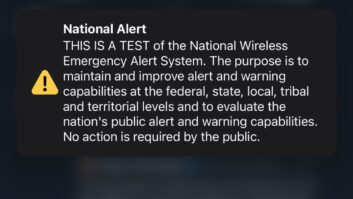FEMA is trying to get emergency alerting managers across the country comfortable with the idea of testing their alerts in a closed system.
The nudge coincides with the FCC’s recent urging of the same alerting managers to update their state EAS plans so those can actually be used and stations know which facilities to monitor to receive their alerts.
The concept is to incrementally update and test warning capabilities so when a real emergency happens, local and state officials know what to do to alert the public. “Take time to develop a process. Establish alerting procedures so you know what to do when the time comes,” FEMA Integrated Public Alert and Warning System Program Manager Manny Centeno said in a webinar on Wednesday.
He advised alerting authorities to identify probable hazards in their area and determine who is authorized to originate and manage alerts. Seek advice from other warning managers and develop clear, repeatable warning procedures, he advised.
Review and test those warning plans regularly as staffing or funding resources whence with time, he said. “It seems like a lot of work but it really is not,” he said.
Including representatives of non-English speakers or the deaf /hard-of-hearing public in the alerting planning process is a good idea, he said.
Centeno said mobile text alerts transmitted over cellphones dovetail with EAS, because the short text messages usually end with a note to tune in to local radio and television for more specific warning information.
FEMA IPAWS has a test lab in Indian Head, Md. some 30 miles south of Washington.
The lab at the Joint Interoperable Test Command is a federal government and private industry partnership. The facility includes several alert origination systems and dissemination devices. “We can originate a message, process it … and disseminate it through devices,” Centeno said, all in a closed-loop system without actually alerting the public.










